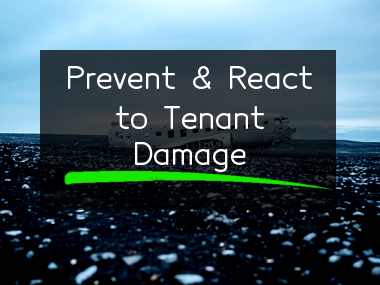Preventing rental property damage:
- 1. Regular inspections: Conduct regular inspections to identify any potential problems or issues before they become a bigger problem. Schedule periodic inspections to ensure everything is working well and identify any potential risks in your rental property.
- 2. Screen tenants carefully: Make sure you conduct a thorough screening of your prospective tenants. This includes credit checks, previous rental history, and employment verification to ensure theyre financially responsible and reliable tenants.
- 3. Set expectations: Establish an agreement and set expectations with tenants when they move in. Clearly define what can and cannot be done in the rental property, such as where pets can go, where smoking is allowed, and what the rules are on loud noise and other disruptive behaviors.
- 4. Provide clear instructions: Provide renters with clear instructions and guidelines on what to do in case of an emergency or maintenance issues.
Reacting to rental property damage:
- 1. Stay calm and assess the damage: In case of damage, stay calm and assess the situation. Take pictures and document any damage, and contact your insurance company for advice and assistance.
- 2. Contact the tenant: Inform your tenant about any damage and contact them to discuss the repair cost and a plan for fixing the issue.
- 3. Fix the damage: Hire a professional to fix any damages and make sure to keep all receipts and documentation.
- 4. Follow up: Follow up with your tenant to ensure the repair has been satisfactorily completed and address any concerns that they may have. Communication is crucial to ensure a positive relationship with your tenant, which can ultimately prevent any future damages.
- 1 Screen tenants carefully Before renting out the property, it's essential to conduct thorough background checks and screenings to ensure that the tenants are trustworthy and responsible.
- 2 Set clear expectations Outline the expectations and rules clearly in the lease agreement, including how the tenant should care for the property and what kind of modifications are permitted.
- 3 Conduct regular inspections Conduct routine inspections to detect any damages early on and address them before they become more serious.
- 4 Provide maintenance Ensure that the property is in good condition and make necessary repairs as needed.
- 5 Educate tenants Educate the tenants on how to properly care for the property, such as not flushing non-degradable items down the toilet or not hanging heavy items on walls.
- 6 Address damages immediately Process damages immediately and as soon as you can. Charge tenants for the cost of repairs if they are responsible for causing the damage.
- 7 Work with tenants Work collaboratively with tenants to address any issues they have or to find a resolution that meets the needs of both parties.
- 1Inspect the damage: Before reacting, ensure you are aware of the full extent of the damage done to your property. Inspect everything - walls, floors, windows, doors, appliances etc. Make a note of everything that needs to be repaired and what it would cost.
- 2Contact the tenant: After inspecting the damage, contact your tenant and notify them of the situation. Make sure you let them know that you have inspected the property and have a list of damages that need to be addressed.
- 3Discuss the cost: Based on your inspection, determine the cost of the repairs, and notify the tenant of the amount. Make it clear that they are responsible for the cost.
- 4Document everything: Make sure you document everything. If the tenant is disputing paying for the damages, you want to have documentation of your inspection and the cost of repairs.
- 5Take action: Once you have reached an agreement on the payment of the damages, take action to have the repairs made. This could be done by hiring a contractor or doing the repairs yourself.
- 6Follow up: After the repairs are completed, follow up with your tenant to ensure that everything has been completed to their satisfaction. If there are any issues, address them promptly.
- 7Review the lease: Use the experience as an opportunity to review your lease agreement to see if there are any changes or additions that could be made to help prevent future damages.
How to Prevent Tenant Damage to Property
How to Respond to Tenant Damage to Property
The Landlord Business Is a People Business
The landlord business involves renting out properties to tenants for a fee. While it may seem like a transactional business, it is primarily focused on people. Landlords interact with tenants daily, addressing their concerns, managing conflict, and ensuring their safety and comfort. At the same time, landlords must maintain healthy relationships with contractors, suppliers, and service providers related to their properties. A good landlord understands that everything revolves around people, and that keeping tenants happy is essential for success. Thus, the landlord business is essentially a people business.
Just one more thing: if you liked the article, please like us on social media and share this article with friends.



